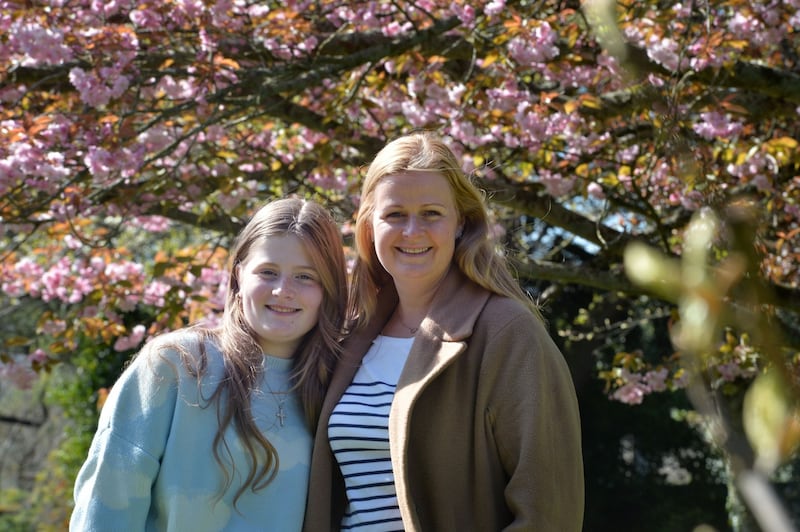When Torunn Stokke Griffin spent a weekend in Dublin in 2005 her trip didn’t pan out quite as she planned. She had developed a fascination with Ireland during her teenage years and always wanted to visit.
“We used to read books in English at school and one of the stories was about Northern Ireland. The book was about mixed couples in Northern Ireland and I found it difficult to grasp the layers of the situation. Our view of conflict was always more black and white, but then you realise things aren’t that simple. That story from Northern Ireland really stuck with me.”
More than a decade passed before Griffin finally visited the country. “I had a boyfriend at the time and bought him the trip as a gift. But then he broke it off and a friend came with me instead. And then I met my husband.”
When people think of Norway they see fjords and alps and that's where I grew up. We were allowed to roam the forests with friends from an early age with no restrictions
The Norwegian friends were advised by the owners of the hotel in Dublin where they were staying to check out Cafe en Seine on Dawson Street. It was there, on a Saturday night in May, that Griffin met Billy. The couple spent the rest of the weekend together and decided to keep in touch through a long-distance relationship. “We just talked so much and realised we had very similar core values. He proposed two months later.”
The couple formally exchanged engagement rings six months later over a bottle of champagne in a freezing cold park in Norway. Griffin’s parents got on very well with her Irish fiancee despite the language barrier and while the union meant their daughter would probably move abroad, they were happy for the couple.
Griffin’s parents, who are now in their 90s, brought up their two daughters on the west coast of Norway in the small island community of Hareidlandet. “When people think of Norway they see fjords and alps and that’s where I grew up. We were allowed to roam the forests with friends from an early age with no restrictions or safety nets. My mum had this high-pitched whistle and that was her way of telling me it was time for dinner.
“It was a fantastic place to grow up, so safe and the neighbours always looked out for you.”
Beyond the bubble
After completing her studies in social sciences, Griffin briefly worked with trade unions in Norway before joining a mystery shopping market research company. She was keen to travel beyond the “bubble of Norway” and loved that her career brought her to different places around the world.
“I first realised I was in that bubble when I met people from Serbia and Bosnia at student union meetings. They had such a strong cultural bond but also held strong differences with regards to the conflict in the region. I met people my age who had been out protesting against Slobodan Milosevic. That time taught me there was so much more going on outside my little world.”
In the summer of 2006, a year after her first visit, Griffin moved full time to Ireland. She had saved some money before leaving for Ireland and took her time looking for work in Dublin.
“I’d gone up the ladder in Norway but I felt it wouldn’t hurt to start from scratch here. I did some temp work that brought me to Brown Thomas where I was offered a full-time job with Chanel.”

Like most Norwegians, Griffin was a confident English speaker. However, she quickly learned that conversational English in Ireland was entirely different to skills she had learned in school and through watching American films. “Even when I met Billy and his brother out with friends I was lost for a long time with all the slang, abbreviations, expressions and cultural links. In Brown Thomas I learned I really was a foreigner, my language skills just were not up to speed.”
Interacting with colleagues was also challenging, says Griffin. “I realised the way Irish girls talk to each other was quite different to how Norwegian girls speak. Girls in Norway are much more direct so I’m sure I insulted many people at first. Here it was about the subtleties and what you don’t say.”
Loneliness
Griffin also struggled to forge strong friendships in Ireland. She loved the large family get-togethers at her husband’s house close to where they live in Knocklyon, but often felt lonely.
“It was hard not to have close friends who I could meet up with for coffee. Sometimes I felt I had to force myself on people. I told myself, I need to have one good friend within the next three years plus acquaintances to meet for coffee. I set that goal but also stepped back and tried not to stress about it.”
Griffin signed up for volleyball training, a sport she loved in Norway, where she met other women who had moved from abroad. She also met her now best friend when she was pregnant with her first child.
It feels like a strength to be Norwegian here. I really like being a 'blow-in', and I think the mix of cultures has really benefited me
After Brown Thomas, Griffin worked for a number of different companies before joining the staff of the Norwegian embassy in Dublin six years ago. “It really is an amazing job. You walk in and everyone speaks Norwegian and you walk back out and you’re in Irish society. You have the best of two worlds.”
Griffin says her two daughters – Maria (11) and Erin (9) – are proud of their dual citizenship and love visiting their grandparents on Hareidlandet. “When I bring my daughters home they’re allowed to roam around for hours with friends the same way I was. They absolutely treasure this freedom. It’s important to me that the girls have that feeling of being more than just citizens of Ireland but wanting to explore and develop broader thinking.”
Like so many people, Griffin has not seen her parents since before the pandemic began and used to travel to Norway three to four times a year. “Being away from family is always tough, especially as my parents get older. But for me, this past year has been about exploring Ireland more than we ever did before. It’s brought more calm into our lives.”
Griffin is still deeply connected to Norway but says she has learned a lot living in Ireland. “It feels like a strength to be Norwegian here. I really like being a ‘blow-in’, and I think the mix of cultures has really benefited me. Of course, if I could bring the alps and fjords here that would be amazing. But I’m proud of living here. I’m Norwegian, but I’m proud of Ireland.”











